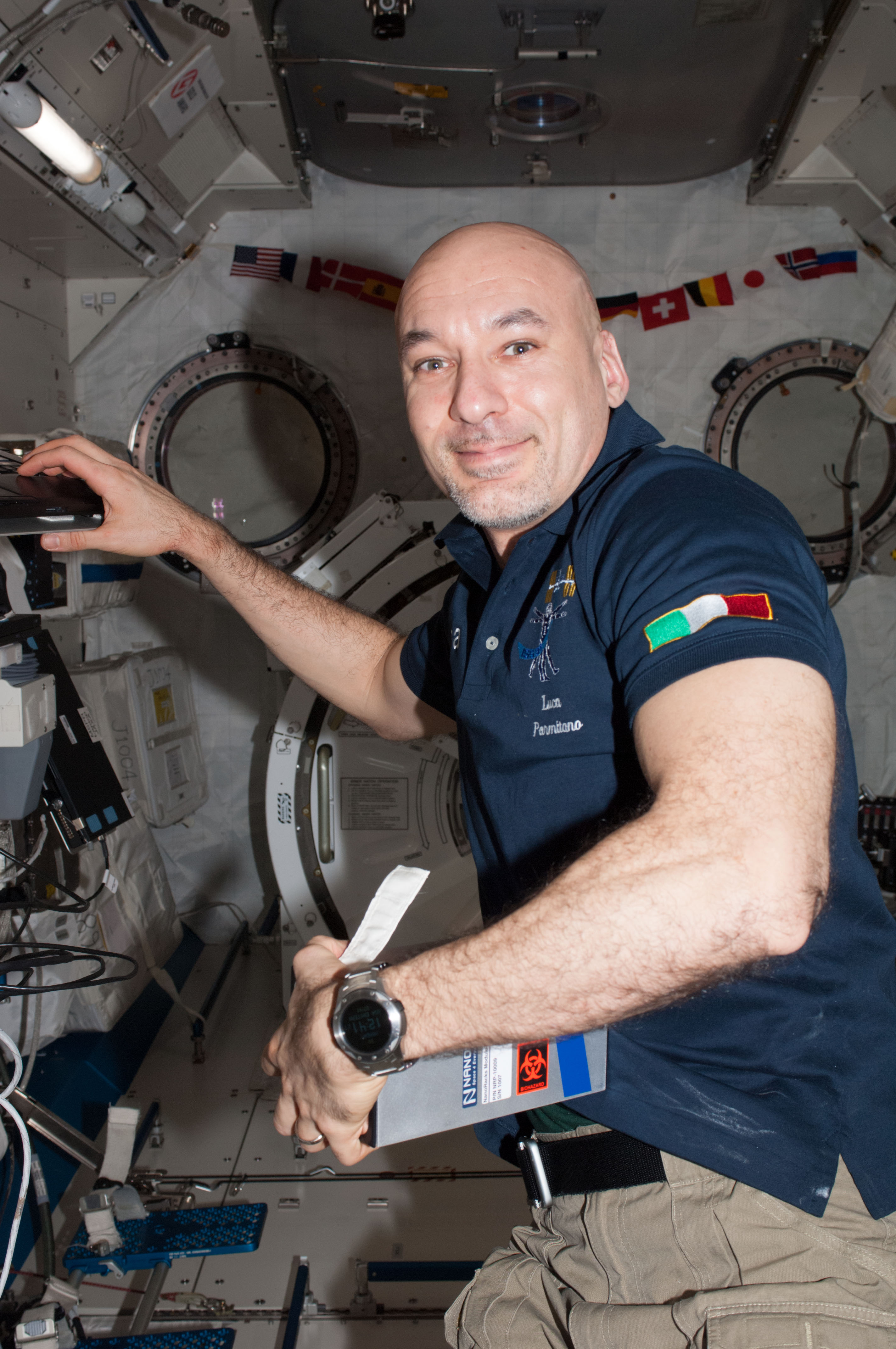
CLICK FOR SPECTACULAR ZOOM Soyuz 35S at night docked to the International Space Station. Soyuz 35S departs Station for Earth on Sunday, November 10, 2013, with the Falcon I SSEP experiments payload aboard.
On Sunday November 10, 2013, Soyuz 35S is scheduled for departure from the International Space Station, and de-orbit. It is expected to land on the plains of Kazakhstan at 9:50 pm EST Nov. 10 (8:50 am Kazakh time on Nov. 11) with Expedition 37 Commander Fyodor Yurchikhin (Russia), and Flight Engineers Karen Nyberg (NASA) and Luca Parmitano (ESA). Aboard will be the SSEP Falcon I payload of 7 experiments. Luca and Karen have been operating the Falcon I experiments since the payload arrived at Station on September 29, 2013. Below is an image of Luca with the Falcon I payload box in his hand.
WATCH LIVE RIGHT HERE ON THE NASA TV PORTAL BELOW
Here are the times for live NASA TV coverage of upcoming Soyuz 35S milestone events–
2:30 pm EST: hatch closure coverage begins, with a replay of the change of command ceremony
6:00 pm EST: undocking coverage begins
8:30 pm EST: landing coverage begins at 8:30 pm
If you bookmark this page, you can come back right here and watch in the NASA TV portal below.
SSEP student flight teams are now preparing for the return of Falcon I. Teams are standing by for harvesting and analysis of both their flight and ground truth mini-labs. To keep everyone apprised of final Falcon I flight operations, here is the communique sent by SSEP Flight Operations Manager Stacy Hamel this morning to all 7 student flight experiment teams: San Marino CA (2 experiment teams); Howard County, MD; Alpine, NJ; Pennsauken, NJ; Willis TX; and Russell County, VA:
Hello Mission 3a Teams,
The Mission 3 Falcon I Payload will return on Soyuz 35S currently scheduled to de-orbit on Sunday, November 10th. It is scheduled to land in Kazakhstan at 9:50 pm ET.
NanoRacks expects no more than 72 hours from landing in Kazakhstan to receipt of the SSEP experiments in Houston, and more likely 48 hours. So NanoRacks anticipates delivery of the mini-labs to your communities by Thursday, November 14 or at the latest Friday, November 15.
Student teams should be on call to harvest the experiments immediately upon receipt of the mini-lab in order to maximize scientific return.
This might also be a good time to distribute a press release to local media.
Best,
Stacy
The Student Spaceflight Experiments Program (SSEP) is a program of the National Center for Earth and Space Science Education (NCESSE) in the U.S., and the Arthur C. Clarke Institute for Space Education internationally. It is enabled through a strategic partnership with NanoRacks LLC, working with NASA under a Space Act Agreement as part of the utilization of the International Space Station as a National Laboratory. SSEP is the first pre-college STEM education program that is both a U.S. national initiative and implemented as an on-orbit commercial space venture.
The Smithsonian National Air and Space Museum, Center for the Advancement of Science in Space (CASIS), Carnegie Institution of Washington, NASA Nebraska Space Grant Consortium, and Subaru of America, Inc., are National Partners on the Student Spaceflight Experiments Program.


Comments are closed.